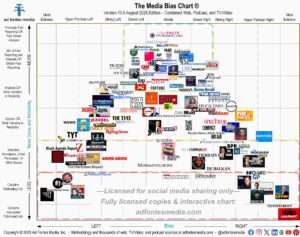
Tips for Determining the Veracity of Information Online
Author:
Vanessa Otero
Date:
11/04/2024
How to determine the likelihood of veracity of information online:
- Look out for things that should make you skeptical.
Ask yourself: Does the claim sound far-fetched?
Do you have prior knowledge that refutes the claim?
Does it seem like a big story, but you haven’t heard it anywhere else?
Does the claim appeal to your emotions? - Open up a new browser tab. Look up the claim plus the word “news.”
Look for links to articles or primary sources, not AI summaries. - Determine the reliability of the available links.
You might find highly reliable sources, medium or low reliability sources, or no related links at all. - If reliable links are available, read further to see if they can confirm or refute the information.
If the only corroboration you can find for a claim is from less reliable sources, or if you find no corroboration, stay skeptical. - If you find competing information, use your judgment to weigh the credibility of each source.
Focus mostly on evidence and likelihood.
Remember, if you are not sure if something is true, look for more information rather than reacting or reposting.
The bigger your platform, the more responsibility you have to make sure information is true before sharing it.
Below are slides containing the tips above. Feel free to download them and share with family and friends.
Want to stay informed on all of the work of Ad Fontes Media? Sign up for our free biweekly email newsletter!
Vanessa Otero is a former patent attorney in the Denver, Colorado, area with a B.A. in English from UCLA and a J.D. from the University of Denver. She is the original creator of the Media Bias Chart (October 2016), and founded Ad Fontes Media in February of 2018 to fulfill the need revealed by the popularity of the chart — the need for a map to help people navigate the complex media landscape, and for comprehensive content analysis of media sources themselves. Vanessa regularly speaks on the topic of media bias and polarization to a variety of audiences.













